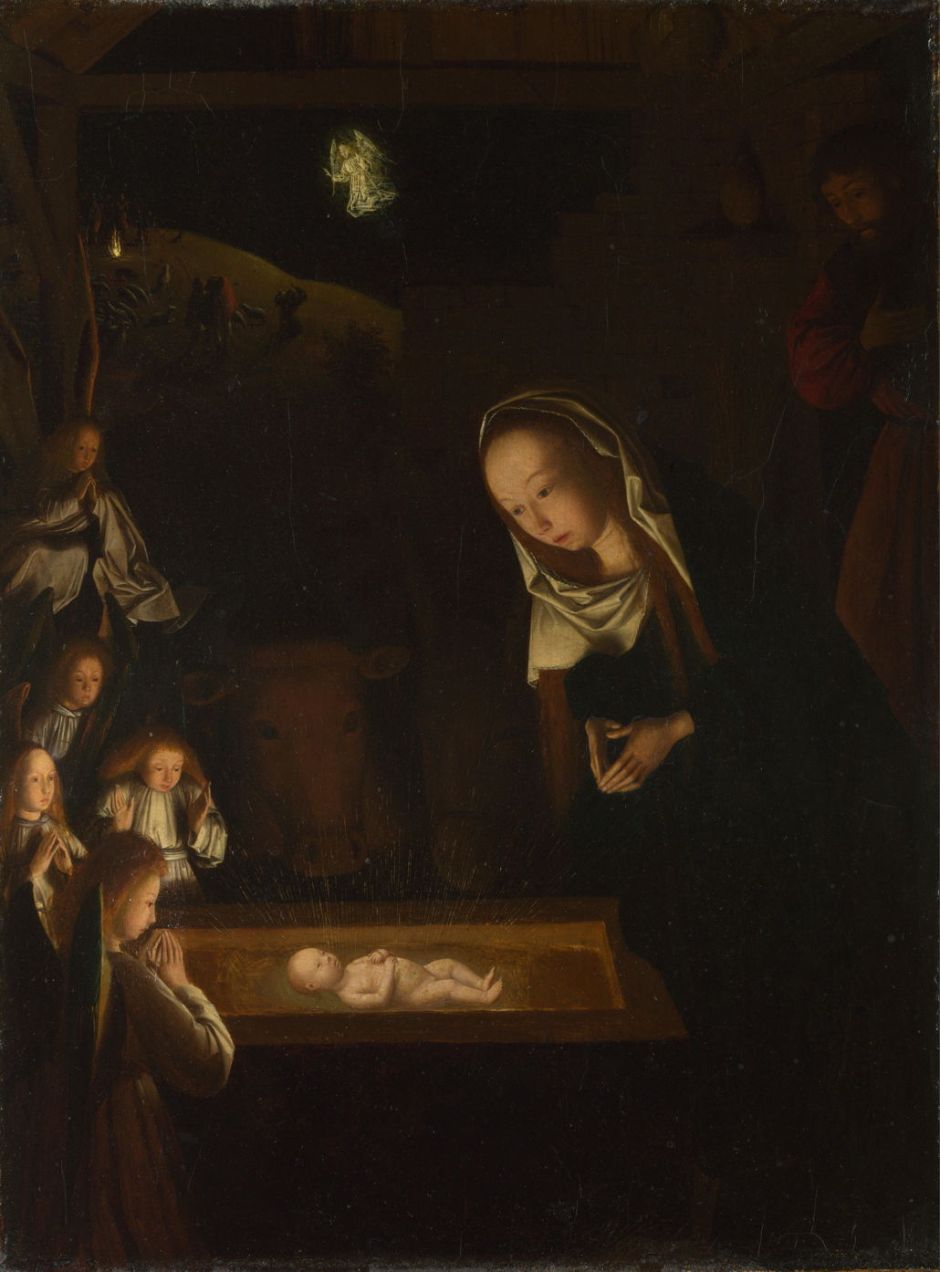The Dutch Golden Age: Chiaroscuro in Utrecht
Painting in the Golden Age didn’t occur in isolation, but was greatly influenced by artists of Flanders and Brabant to the south, many of whom visited or migrated to the Dutch Republic. Some Dutch artists effectively exported their landscape and other skills to Italy, where there was a group of emigrés known as the Bentvueghels (meaning birds of a feather) between about 1620-1710.
From the late 1590s until well into the following century, the distinctive style of Caravaggio (1571-1610) drew followers across Europe, most of whom saw his paintings when they were training in Italy. This wave of Caravaggism spread when those painters returned to their native lands, including the states of the Dutch Republic.

Caravaggio’s style was by no means unique, and his use of chiaroscuro had been anticipated a century earlier in this wonderful nocturne by the early Netherlandish painter Geertgen tot Sint Jans, Nativity at Night, thought to be from about 1490. Chiaroscuro makes narrative sense here, and results in a scene of great tenderness and reverence, thanks to its soft transitions of tones.

Caravaggio’s third painting of Salome Receives the Head of John the Baptist was completed in about 1609-10, shortly before his death, and illustrates his style at its height.

Artemisia Gentileschi’s father was a well-known Caravaggist, and she followed suit for the early years of her career. Her painting of Judith Slaying Holofernes followed a decade later in 1620-21. Over that period, Hendrick ter Brugghen, Gerrit van Honthorst, Dirck van Baburen and Jan van Bijlert became influenced when in Italy, and returned to Utrecht, where they have become known as the Utrecht Caravaggists.

Van Honthorst’s The Soldier and the Girl from about 1621 is a good example, where the young woman is lighting her candle from a burning coal.

Van Honthorst’s dimly lit indoor scenes are associated with pleasures, often fairly sinful ones, as in his Merry Company from 1623. He shows here how directional lighting can transform appearance, turning quite ordinary or ugly faces into caricatures.

As music was breaking out of seedy dens of iniquity into mainstream culture, learning to play an instrument and playing to others became fashionable, as shown in van Honthorst’s merry Concert on a Balcony from 1624.

During the 1620s his paintings became more narrative and less Caravaggist, as seen in his Solon and Croesus from 1624. This shows the elderly Greek statesman getting a hostile reception from Croesus, with his court laughing at his responses. Included are two slaves supplicating themselves before the king, in an interesting condemnation of slavery for its time.
Some more mainstream artists also showed Caravaggist tendencies.

Rembrandt’s very early painting of The Operation from 1624-25 shows a barber-surgeon and his assistant performing surgery on the side of a man’s head, by the light of a commonplace candle on a candlestick holder.

Hendrick ter Brugghen’s religious narrative of Jacob Reproaching Laban for Giving him Leah in Place of Rachel is from the later years of Caravaggism, in 1627.
Although remarkably little is known of the paintings of Judith Leyster, she appears to have been influenced when painting in Haarlem.

Like most of her surviving paintings, A Game of Tric-Trac was made before her marriage to Jan Miense Molenaer, in this case in 1630.

Although Rembrandt’s use of chiaroscuro is best known from his later paintings, Saint Peter in Prison (The Apostle Peter Kneeling) dates from 1631.
Later interiors and genre works show the more lasting influence imported from Italy.